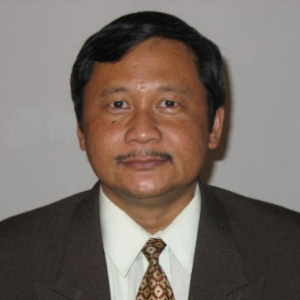Title : Drone mapping of the potential of sago forest for food security and management of climate change
Abstract:
The area of the sago forest on the small island of Ambon (Eastern Indonesia) is around 471 ha, which are scattered across the island. The most presence of sago is in Lehitu District 239 ha, Salahutu District 168 ha and Leitimur Selatan District 44 ha. Detailed research was carried out in Tulehu Village, Salahutu District by mapping a sago forest with a drone covering an area of 127 ha. The flying height of the drone is 150 m, with Front overlap and Side Overlap each of 80% with a total of 1,211 photos and GSD resolution of 3 cm/pix. The PIX4D Mapper application is used to obtain Orthomosaic raster map results and Digital Elevation Model Data or Digital Surface Model Data. From the drone coverage obtained, digitizing polygons was carried out for all forest sago palms. By using the Orthomosaic map at the research location, a land use analysis was carried out. Forest sago onscreen delineation is carried out to classify Sago and Non-Sago land use. Identification of sago trees using the Onscreen delineation technique for each sago tree from Orthomosaic data based on the sago tree height class using the Data Digital Surface Model. The results of the classification based on tree height obtained the number of sago plants from the growth rates of seedling, sapling, poles and trees respectively: 100, 818, 3,332 and 3,709 trees. In the classification of sago forest (initial research), 5 sago samples were taken from various growth stages to determine the biomass content and sago starch content. Biomass content ranges from 48.1 kg to 761.6 kg and the average production of sago starch is 545 kg/tree. Thus, the biomass content of sago forest plays a role in tackling climate change. Also, the high content of sago starch will be useful for food security in the study area.
Keywords: sago forest, drone, biomass, climate change
Audience Take Away Notes
- This research will help the audience to be able to do sago forest conservation for food security and management climate change.
- This research can be developed more broadly in other faculties, especially those that focus on sago conservation or renewable natural resources to achieve the SDGs
- This research will be very useful, especially for stakeholders in the sustainable management of natural resources.



